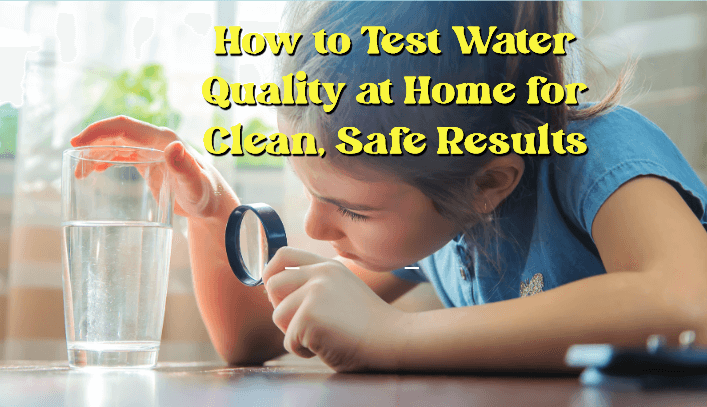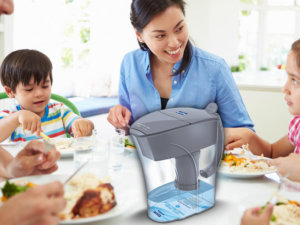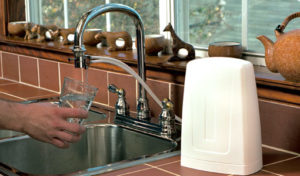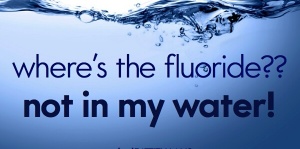The Importance of Clean Water: Understanding the Issues and Solutions
Access to clean water is a fundamental necessity for all living beings. However, clean water is not always readily available, and it is crucial to raise awareness about the issues surrounding water contamination and the importance of finding effective solutions. In this article, we will delve into the significance of clean water, explore the various challenges associated with water pollution, and discuss potential solutions to ensure access to clean and safe water for all.
One key aspect of ensuring clean well water, in particular, is understanding what micron filter is best for well water. Well water sources can be susceptible to various contaminants, including sediment, microorganisms, and other impurities. Choosing the right micron filter is essential to effectively remove these contaminants and maintain water quality in private well systems. We will also explore the options available for well water filtration and provide guidance on selecting the most suitable micron filter for your specific well water needs.
- The Significance of Clean Water: Clean water plays a vital role in maintaining our overall health and well-being. It is essential for hydration, proper sanitation, and the prevention of waterborne diseases. Access to clean water also impacts various aspects of life, including agriculture, industry, and the environment. Recognizing the value of clean water is the first step towards addressing the challenges we face in ensuring its availability.
- Understanding Water Pollution: Water pollution arises from a variety of sources, including industrial activities, agricultural practices, inadequate wastewater treatment, and improper disposal of hazardous substances. These pollutants can contaminate water bodies, leading to adverse effects on human health and ecosystems. Understanding the causes and sources of water pollution is crucial for implementing effective strategies to prevent and mitigate contamination.
- Common Water Contaminants: Water can be contaminated by physical, chemical, biological, and radiological contaminants. Physical contaminants include sediment, debris, and suspended particles, while chemical contaminants encompass substances like pesticides, heavy metals, and harmful chemicals. Biological contaminants include bacteria, viruses, and parasites that can cause waterborne diseases. Radiological contaminants refer to substances like uranium or radon that may pose health risks. Identifying the specific contaminants in water sources is crucial for tailored treatment and prevention measures.
- Solutions for Clean Water: Addressing water pollution requires a multifaceted approach involving individuals, communities, governments, and organizations. Here are some potential solutions:
a. Water Treatment: Implementing effective water treatment methods, such as filtration, disinfection, and advanced technologies like reverse osmosis, can significantly reduce contaminants and ensure cleaner water.
b. Source Protection: Protecting water sources through land and watershed management practices can prevent pollution from entering water bodies.
c. Responsible Industry Practices: Encouraging industries to adopt sustainable practices, minimize waste generation, and treat their wastewater before disposal helps reduce pollution at the source.
d. Agricultural Best Practices: Promoting sustainable agricultural practices, such as responsible pesticide and fertilizer use, proper irrigation techniques, and soil conservation measures, can prevent agricultural runoff and subsequent water contamination.
e. Public Education and Awareness: Increasing awareness among individuals about water conservation, pollution prevention, and the importance of responsible water use can drive positive change and foster a culture of water stewardship.
Conclusion: Access to clean water is a fundamental right, and it is imperative that we understand the issues surrounding water pollution to find effective solutions. By recognizing the significance of clean water, understanding the sources and types of contaminants, and implementing appropriate measures, we can work towards ensuring a sustainable supply of clean and safe water for present and future generations. Together, we can make a difference in preserving this precious resource and safeguarding the well-being of communities and ecosystems worldwide.
Is Your Tap Water Really Clean? Why Testing Water Quality Matters
Introduction: When you turn on the tap, you expect clean and safe water to flow out. However, appearances can be deceiving, and it’s essential to understand the importance of testing water quality. In this article, we will explore the reasons why testing your tap water matters and how it can help ensure the health and well-being of you and your loved ones.
- Potential Contaminants in Tap Water: Testing your water is crucial to identify and address any potential risks associated with these contaminants. If you rely on well water as your primary source, it’s essential to invest in the best micron filter for well water to ensure the removal of impurities and contaminants that may be present in your groundwater. These filters can help provide you with clean and safe drinking water by effectively trapping particles and microorganisms that might otherwise go undetected.
- Health Implications: Consuming contaminated water can have adverse health effects. For instance, chemical contaminants like lead, pesticides, or disinfection byproducts can pose significant risks to human health, potentially causing developmental issues, organ damage, or increased cancer risks. Biological contaminants such as bacteria, viruses, and parasites can lead to waterborne diseases, resulting in gastrointestinal illnesses, fever, or other infections. Regular water testing helps ensure that your tap water is free from harmful contaminants, safeguarding your health and that of your family.
- Aging Infrastructure and Plumbing: Water travels through an intricate network of pipes before reaching your tap. In older homes or areas with aging infrastructure, there is a higher risk of lead or other contaminants leaching into the water from plumbing materials. Testing your water quality can help detect any potential issues with your plumbing system and prompt necessary actions to mitigate risks.
- Well Water Concerns: If you rely on well water, it is especially crucial to regularly test its quality. Well water is susceptible to contamination from various sources, such as agricultural activities, septic systems, or nearby industrial operations. Regular testing allows you to monitor the quality of your well water and take appropriate measures to address any identified issues.
- Compliance with Regulatory Standards: Water suppliers are subject to regulations that establish maximum contaminant levels and treatment requirements. However, these regulations may not always guarantee that your tap water is completely free of contaminants. By testing your water independently, you can have peace of mind knowing that it meets not only the minimum standards but also your personal standards for water quality.
- Taking Control of Your Water: Testing your tap water empowers you to take control of your water quality. It allows you to make informed decisions about any necessary water treatment or filtration systems based on the specific contaminants present. Testing also provides a baseline to monitor changes over time and take appropriate actions if the quality deteriorates.
Testing your tap water is a proactive step towards ensuring the cleanliness and safety of the water you consume. It helps you identify potential contaminants, understand health risks, and take appropriate measures to protect yourself and your family. Whether you rely on municipal water or have a private well, regular water testing empowers you to make informed choices and take control of your water quality.
In the case of well water, investing in the best micron filter for well water is another crucial step to enhance water quality. These filters are specially designed to trap and remove impurities, sediment, and microorganisms that may be present in groundwater. By combining water testing with an effective micron filter, you can ensure that your well water is as clean and safe as possible. Remember, clean and safe water is essential for your well-being, and testing water quality matters.
Uncovering the Hidden Dangers: Water Contaminants and Their Impact
Clean and safe water is vital for our well-being, but hidden dangers can lurk within our water sources. Water contaminants pose risks to human health and the environment. In this article, we will delve into the topic of water contaminants, exploring their sources, types, and the potential impacts they can have on our lives.
- Sources of Water Contaminants: Water contaminants can originate from various sources. Industrial activities, including manufacturing and waste disposal, can release chemicals and pollutants into water bodies. Agricultural practices, such as pesticide and fertilizer use, can contribute to runoff and groundwater contamination. Domestic sources, such as improper disposal of household chemicals and inadequate wastewater treatment, can also introduce contaminants into the water supply. Understanding the sources is crucial for identifying and mitigating potential risks.
- Types of Water Contaminants: Water contaminants can be classified into several categories:
a. Physical Contaminants: Physical contaminants include sediment, debris, and suspended particles that can make water appear cloudy or discolored. They may affect the taste, odor, and clarity of water.
b. Chemical Contaminants: Chemical contaminants encompass substances like heavy metals (e.g., lead, mercury), pesticides, industrial chemicals, and pharmaceuticals. These contaminants can have adverse effects on human health, ranging from acute toxicity to long-term health implications.
c. Biological Contaminants: Biological contaminants refer to microorganisms like bacteria, viruses, and parasites. Waterborne pathogens can cause a range of illnesses, from gastrointestinal infections to more severe diseases.
d. Radiological Contaminants: Radiological contaminants include substances like uranium, radon, and other radioactive elements. Exposure to high levels of these contaminants can pose risks to human health. - Impacts of Water Contaminants: Water contaminants can have significant impacts on human health, the environment, and ecosystems:
a. Human Health: Consuming water contaminated with chemicals or pathogens can lead to various health problems, including gastrointestinal illnesses, organ damage, developmental issues, increased cancer risks, and compromised immune systems.
b. Environmental Impact: Water contaminants can harm aquatic ecosystems and wildlife. They can disrupt the balance of ecosystems, impair water quality, and negatively impact aquatic life, leading to a decline in biodiversity.
c. Economic Costs: Water contamination can result in significant economic costs, including healthcare expenses associated with treating waterborne illnesses, loss of productivity due to sickness, and the need for water treatment or remediation measures.
d. Public Health Crises: Severe cases of water contamination, like the Flint Water Crisis, highlight the potential for widespread public health crises. Such incidents can lead to loss of trust in the water supply, significant legal ramifications, and long-term health consequences for affected communities. - Importance of Prevention and Treatment: Preventing water contamination and implementing effective treatment measures are essential for safeguarding our health and the environment. It requires a multi-faceted approach, including:
a. Source Protection: Implementing measures to prevent contaminants from entering water sources, such as regulating industrial discharges, promoting responsible agricultural practices, and enhancing wastewater treatment processes.
b. Water Treatment: Employing appropriate water treatment methods, such as filtration, disinfection, and advanced technologies, to remove or reduce contaminants and ensure the delivery of clean and safe water.
c. Education and Awareness: Raising awareness about the importance of water conservation, responsible chemical use, proper waste disposal, and the potential risks associated with water contaminants.
Uncovering the hidden dangers of water contaminants is crucial for protecting human health, ecosystems, and the sustainability of our water resources. By understanding the sources, types, and impacts of water contaminants, we can take proactive steps to prevent contamination, implement effective treatment measures, and ensure access to clean and safe water for ourselves and future generations. Together, we can work towards a healthier and more sustainable water future.
Testing Water Quality: A Step-by-Step Guide to Ensure Clean, Safe Water
Testing water quality is a vital step in ensuring that the water we consume is clean and safe. Regular testing allows us to identify potential contaminants and take appropriate actions to protect our health and well-being. In this article, we will provide a step-by-step guide to testing water quality, empowering you to proactively monitor and maintain the cleanliness of your water supply.
- Understand the Importance of Water Testing: Water testing is crucial because it helps us identify any contaminants or issues that may be present in our water supply. By testing our water, we gain valuable information about its quality, enabling us to make informed decisions and take appropriate measures to address any concerns.
- Determine the Testing Frequency: The frequency of water testing depends on several factors, including the source of your water, potential contamination risks, and any specific concerns you may have. Generally, it is recommended to test private well water at least once a year. However, if you notice any changes in taste, odor, or appearance of the water, or if there are known issues in your area, more frequent testing may be necessary.
- Choose the Testing Method: There are various methods available for testing water quality, ranging from DIY testing kits to professional laboratory analysis. Consider your needs, budget, and the level of detail required when selecting a testing method.
a. DIY Testing Kits: DIY testing kits are readily available and often provide quick, on-the-spot results. These kits typically include test strips or vials that detect common contaminants such as bacteria, lead, nitrates, pH levels, or chlorine. While they offer convenience and affordability, they may not provide the same level of accuracy as laboratory testing.
b. Laboratory Analysis: For more comprehensive and accurate results, consider sending a water sample to a certified laboratory for analysis. This method involves collecting a sample following specific instructions provided by the laboratory and then shipping it to them for testing. Laboratory analysis can provide detailed information about a wide range of contaminants and is particularly recommended for well water or when specific concerns exist. - Collecting a Water Sample: When collecting a water sample, it is crucial to follow proper procedures to ensure accuracy and avoid contamination:
a. Use a Clean Container: Use a sterile or clean container specifically designed for water sampling. Rinse the container with the water you are going to sample and fill it directly from the source. Avoid touching the inside of the container or allowing it to come into contact with any other substances.
b. Sample from a Tap: Depending on your testing requirements, you may need to sample water from different taps or locations within your property. Follow the specific instructions provided by the testing method or laboratory to ensure proper sampling.
c. Consider Timing: Timing is important, especially if you are testing for certain contaminants like bacteria. Follow any time constraints provided by the testing method to obtain accurate results. - Follow Testing Instructions: Whether you are using a DIY testing kit or sending your sample to a laboratory, carefully read and follow the provided instructions. Each testing method has specific guidelines for sample preparation, handling, and testing procedures. Adhering to these instructions ensures reliable and accurate results.
- Interpreting the Results: Once you have received your test results, take the time to understand and interpret them. Some testing methods may provide straightforward pass/fail results, while others may offer detailed readings or comparisons to regulatory standards. If you have any concerns or questions about the results, consult with a water professional or the testing laboratory for further clarification.
- Taking Action: Based on the test results, you can determine the necessary actions to ensure clean and safe water:
a. Addressing Contaminants: If any contaminants are detected above acceptable levels, consider implementing appropriate treatment methods such as filtration systems, water softeners, or disinfection techniques to remove or reduce the contaminants.
b. Follow-Up Testing: For ongoing monitoring, follow the recommended testing frequency and consider periodic retesting to ensure the effectiveness of any implemented treatment measures.
Testing water quality is an essential step in maintaining clean and safe water for consumption. By understanding the importance of water testing, choosing the appropriate testing method, collecting accurate samples, and interpreting the results, you can take proactive measures to address any concerns and ensure the cleanliness and safety of your water supply. Regular testing and appropriate actions will help safeguard the health and well-being of you and your loved ones, providing peace of mind and confidence in the water you consume.



